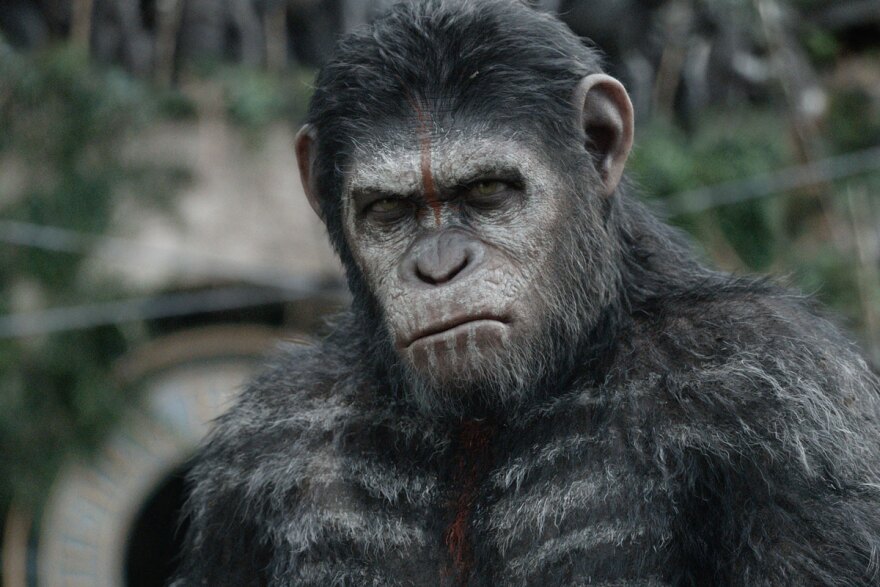Dawn of the Planet of the Apes is the latest incarnation of a movie franchise that’s been going for 46 years. Unfortunately, the situation hasn’t improved – people and apes are still going at it.
Ever since the first Planet of the Apes in 1968, one thing all the films have not lacked is self-righteousness. They’ve made smug pronouncements on the stupidity and carelessness of human beings, about our repulsive, self-destructive urges to wage war, our dishonesty – and with the sense that we’ve blown it.
A great moment of adolescent irony comes at the end of the original Planet of the Apes, when the famously self-righteous Charlton Heston sees the Statue of Liberty buried in the sand, and moans his anguished judgment on the idiocy of human beings.
The latest in the series, Dawn of the Planet of the Apes, keeps the tradition flowing, and adds to the brew the irresistible virtues of family, motherhood, brotherhood, friendship, loyalty, pious struggle, and, of course, the lack of these fundamentals in most human beings. The film’s cup brims with nobility and high-mindedness, but it’s pretty monosyllabic.
Maybe the problem is that the lofty thoughts have been entrusted to filmmakers who are basically tech heads.
In 2011’s Rise of the Planet of the Apes, homo sapiens and apes fought a terrific battle on the Golden Gate Bridge. Now, three years later, while the human beings live in a wrecked San Francisco, the apes have taken up lodgings in Marin County, just over the bridge. Meaning the fate of life on Earth still depends on beings in the Bay Area.
When the picture opens, everyone seems content to stay in their place – but not for long, and there will be a fight.
Unlike the environmentally greener apes, the human beings need fuel. Somewhere in Marin, there’s a lake, a dam and a hydroelectric plant. Led by Malcolm (Jason Clarke) the people ask the apes for access to the plant so they can restore electricity to the city. Ape leader Caesar (Andy Serkis), with his wonderfully expressive eyes, has softened his attitude toward humankind. He knows they like their lights.
It may seem picky to point out the film’s problems with the likelihood of things – Alfred Hitchcock said to complain about improbability in movies is a sign of a small mind. Yet this is a movie about apes who now speak English and write such sayings on their walls as “Ape not kill ape,” so probability is a dead issue. But it ought to take more than the turn of a wrench to get electricity flowing to San Francisco. As soon as the city does light up, people are looking at family photos on their old computers, and a CD player blares out The Band singing “The Weight.”
It’s careless, and it turns the film into a joke.
The story of Dawn of the Planet of the Apes is slapped together. The picture telegraphs its plot and it takes the cheap way in and out of situations. The movie practically holds up a sign to tell you that human woman Ellie (Keri Russell) is going to do surgery on Caesar. The film is stapled together from old formulas, and nobody’s even dusted them off.
The CGI effects are again good. Apes leap from tree to tree, up and down cliffs, and make huge bounding leaps over all manner of debris – these are good sights to behold. The acting inside the ape suits is good enough. Andy Serkis makes an expressive, heart-wrenching Caesar and Tony Kebbell is a nasty, vengeful, villanous Koba.
But good effects alone can’t carry more than two hours of film.
In 2014, it’s astonishing to see a movie stick its women back in the kitchen, figuratively speaking. There are two females in Dawn of the Planet of the Apes – Caesar’s sickly wife who has a baby and Ellie who jumps when called. Neither has much effect on anything. For this picture it might still be the 1950s. Maybe in our tumultuous future, women are again simply appendages.
Let’s hope not.







